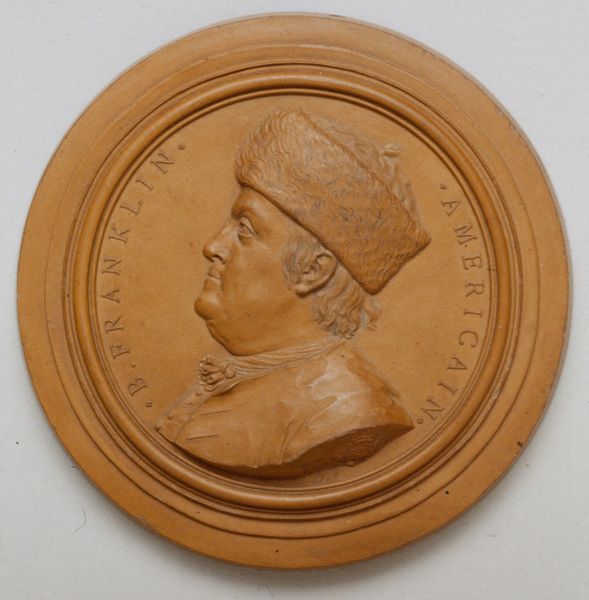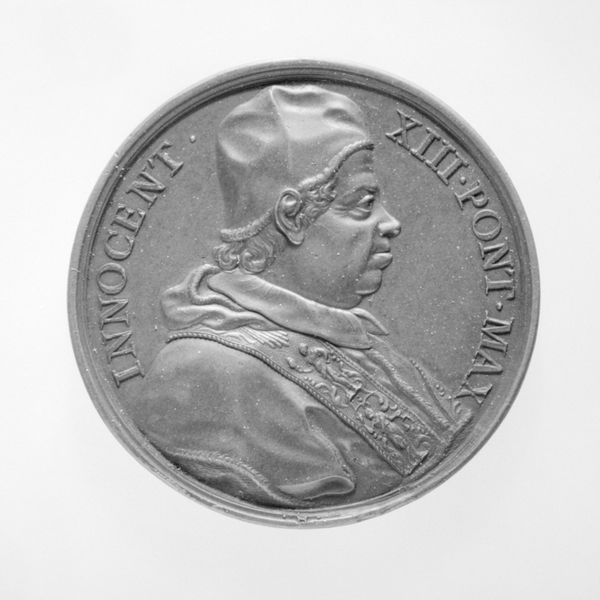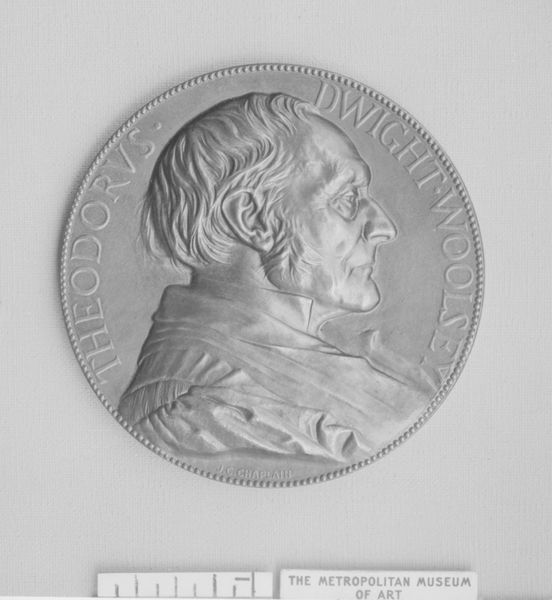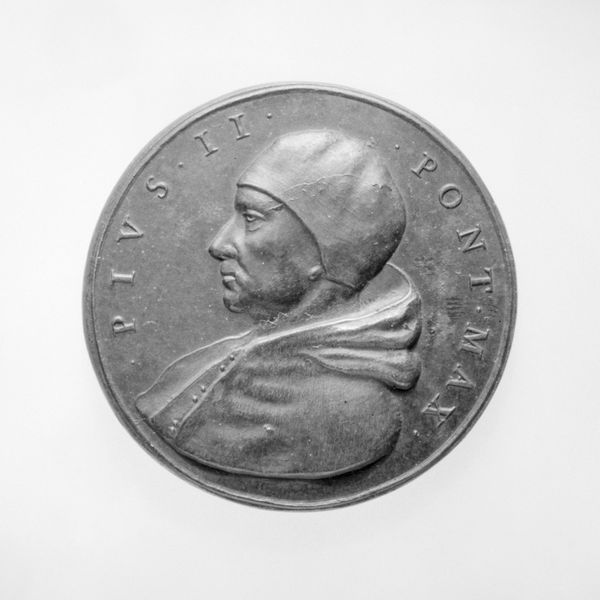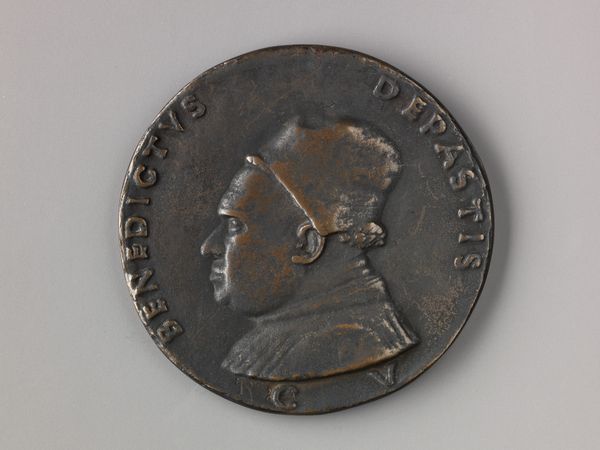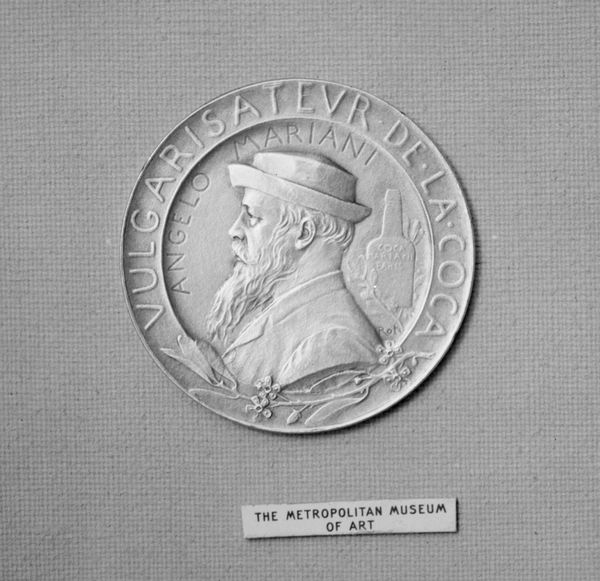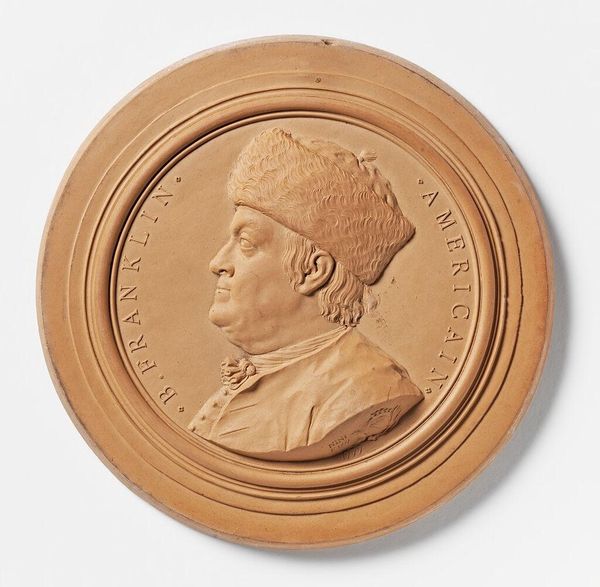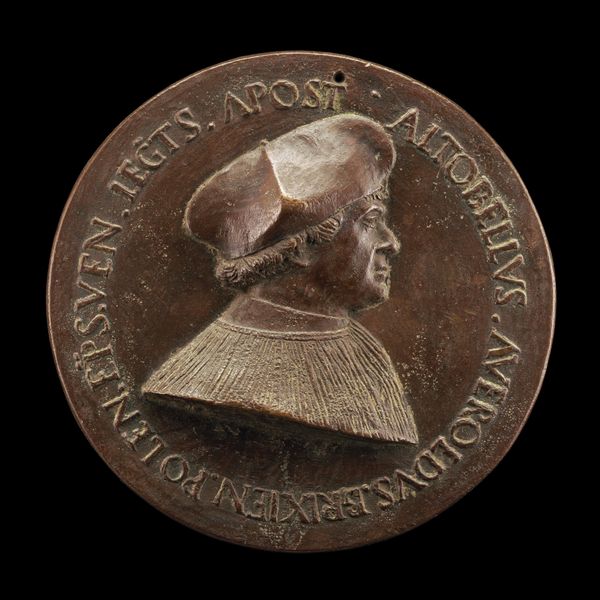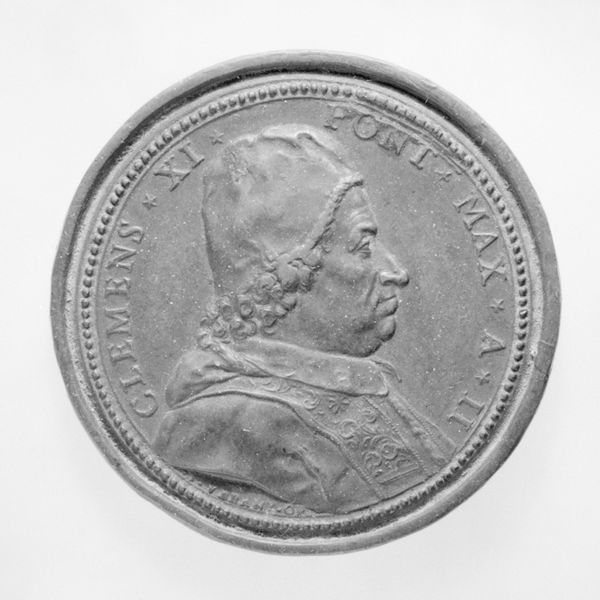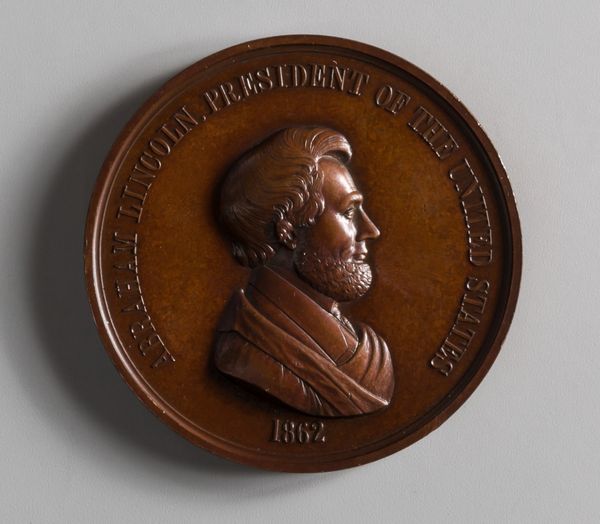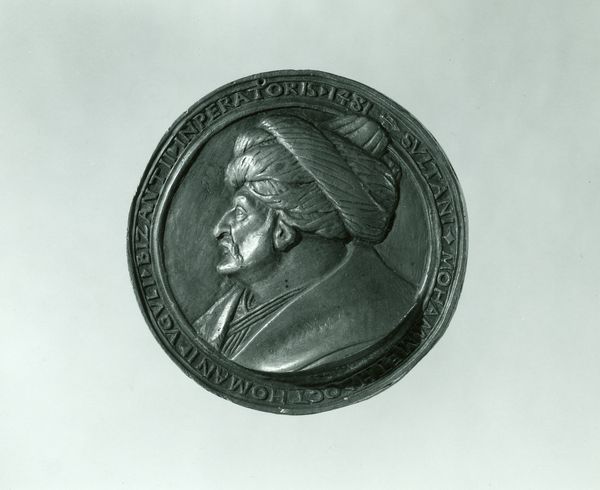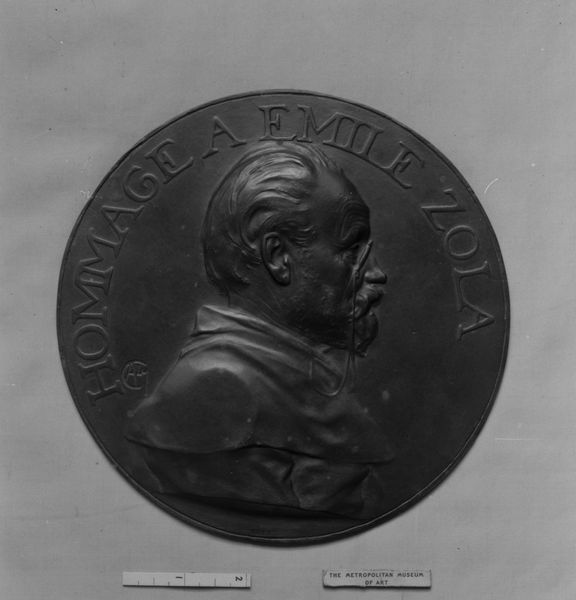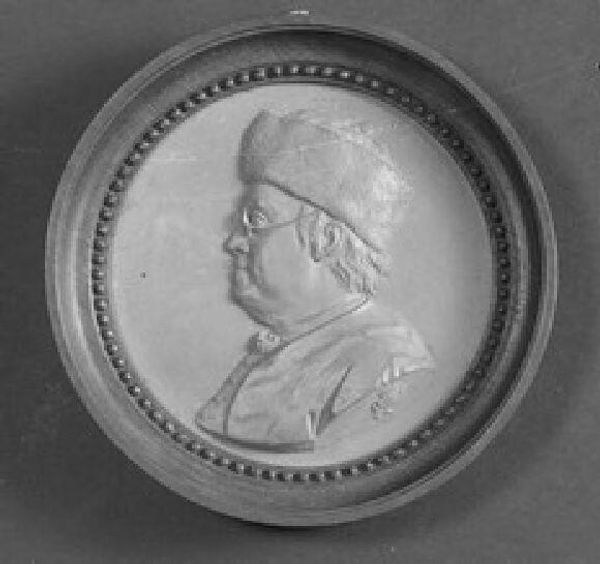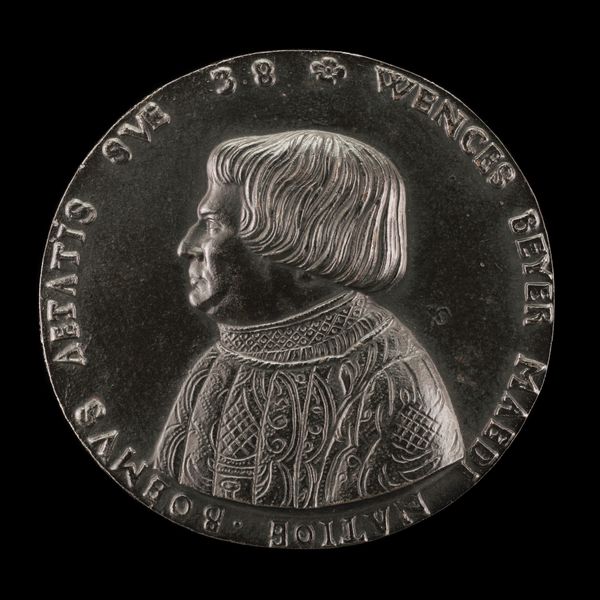
Dimensions: Diameter: 4 1/4 in. (10.8 cm)
Copyright: Public Domain
Editor: So, here we have an 18th-century relief sculpture titled "Benjamin Franklin" by Jean-Baptiste Nini, housed here at the Metropolitan Museum of Art. The portrait seems so...stark. I mean, it’s very classical, almost like a Roman coin. What strikes you when you look at this piece? Curator: The material itself. Consider what it meant to produce this object in the 18th century. Plaster reliefs like this were not considered "high art" in the same vein as painting or marble sculpture, yet they were produced and consumed on a mass scale. These reliefs allowed a wider public to engage with images of important figures, making portraiture and its associated prestige accessible beyond the elite. Look at how sharply defined Franklin's features are. Editor: So it's about mass production and democratization of art? Almost a form of propaganda? Curator: Propaganda has such loaded meaning, but yes, perhaps. I mean, we can consider how the plaster was sourced, mixed, molded, and distributed. This wasn't some unique artistic endeavor, but rather a reproducible commodity, speaking volumes about how Franklin wished to be perceived and how that image was then circulated. Do you notice his hat? Editor: Yes, it seems rather informal for a portrait. Almost like he's making a statement. Curator: Exactly. He wears a fur cap. This was often read as a symbol of liberty and identification with the common man. Consider its significance as a marker within a commodity object distributed widely: How does that affect its meaning and reach in the 18th Century? Editor: It shifts everything. The means of production and circulation become as important as the image itself. The relief’s simplicity contrasts with the complex web of social and political implications. Curator: Precisely. The "starkness" you noted becomes a crucial element in understanding its impact within its time.
Comments
No comments
Be the first to comment and join the conversation on the ultimate creative platform.
